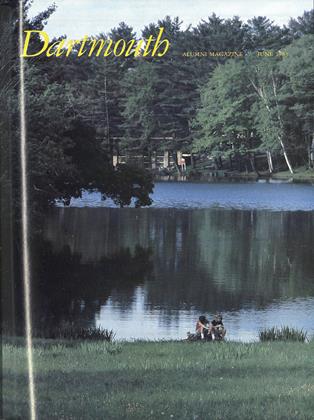THE COMMUNITY LAND TRUST HANDBOOK by Charles Geisler '67, Rob Eshman '82, at al. Rodale Press, 1982. 230 pp., $9.95, paper
In the stress of a political campaign, we all too often stop being honest with others, and even with ourselves, about objectives and the means with which we intend to achieve those objectives. This is particularly true in campaigns for environmental and social issues: in order to maintain consensus among our group, we talk in generalities rather than risk potentially divisive specifics; so as to maintain our personal quality of life, we speak of the public need for conservation and preservation at the public expense; in order to avoid confronting the weaknesses of our own arguments, we band together in interest groups made up exclusively of those who agree with us. The authors of the Community Land TrustHandbook have provided us with an example of the opposite state of affairs, and have produced a model for advocacy of and economic change in a mode that states objectives clearly and presents specific suggestions with thoughtful and critical analysis.
The issue to which the Handbook is directed is the growing number of Americans without access to land in their own communities, without, the land they need to continue traditional forms of subsistence, to develop new economic opportunitles for themselves, or even to provide secure homes for themselves." The authors hypothesis is that "the problems do n°t spring from the land itself, they spring from the ways that land is controlled. They are not land problems as such; they are Property problems." The authors define the current issue as being with problems caused by having neither the capital nor access to capital necessary under current economic conditions to acquire property, and thus without the security of either subsistence or housing.
The Handbook is not, however, a mete polemic against the tradition of private property. The authors have taken up, successfully, the far more difficult task of proposing a specific alternative means of access for the poor to capital for housing and subsistence. It is an alternative that builds upon American traditions of private property and also incorporates equally strong American traditions of community interdependence and self help. The "community land trust" concept they suggest creates a nonprofit corporation, which by community support is given access to capital with which to purchase land. The land trust then provides, through lease arrangements to individuals, the use of that property under circumstances which would otherwise be out of reach. The Handbook begins with a careful definition of the components of any community land trust, and then proceeds to build upon that definition by describing in detail some examples of existing trusts - six case studies are given, some rural some urban, all written by people who were involved in their creation and operation.
By far the most valuable part of the book is in Section 3, "A Practical Guide." Organizing and operating a community land trust is discussed with precision and humor, with all of the difficulties as well as the successes of the experience straightforwardly and candidly presented. The authors acknowledge that for a land trust to be a success,, both community and participating individuals must set aside the objective of profits from trading in land; they recognize as well the difficulty that others will find in making not merely an economic sacrifice but a substantive change in social values. Frustration at delays, resentment at others' suspicions, despair at repeated setback and failure, all are accounted for with gentle perception that gives both strength and credence to the authors' proposals.
At the beginning on one Section, the Handbook quotes from an author who wrote, "It is necessary to begin where the world is, if we are going to change it to what we think it should be." This Handbook offers a model of how well a complex and potentially controversial social alter native can be clearly, honestly presented.
Jonathan Brownell is a Norwich attorney.
 View Full Issue
View Full Issue
More From This Issue
-
 Feature
FeatureThe View from the Women's Locker Room
June 1983 By Agnes Kurtz -
 Feature
FeatureHigh Tech Crisis
June 1983 By Shelby Grantham -
 Feature
FeatureKeeping Dartmouth Diverse
June 1983 By Steve Farnsworth '83 -
 Feature
FeatureJustifiable Pesticide
June 1983 By Robert Bell '67 -
 Cover Story
Cover StoryIn Ledyard's Wake
June 1983 By Jean Hanff Korelitz '83 -
 Feature
FeatureHomely Truths
June 1983 By S.G.
Books
-
 Books
BooksFaculty Publications
June 1934 -
 Books
BooksCOLONEL JOHN GOFFE, EIGHTEENTH CENTURY NEW HAMPSHIRE
October 1950 By Allen R. Foley '20 -
 Books
BooksThe Bible and Universal Pease
By B.T. MARSHALL -
 Books
BooksINTRODUCTION TO ELECTRICAL DISCHARGES IN GASES.
FEBRUARY 1967 By FORREST I. BOLEY -
 Books
BooksShelf Life
May/June 2003 By Matt Feinstein '04 -
 Books
BooksLET'S LOOK AT THE STARS
March 1936 By Richard H. Goddard


